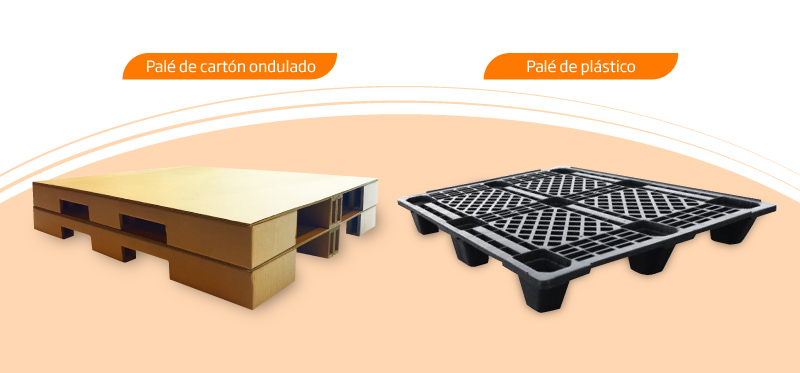Why is correct palletizing so important?

Why is correct palletizing so important?
Pallets are a point of contact between manufacturers, retailers and distributors. Most companies, outside of their transportation and warehousing divisions, do not understand the importance and added value of this powerful logistics tool for their organization.
Pallets are often seen as a simple necessity and their full potential is often overlooked. Most warehouses take pallets for granted, but do not consider how much palletization can really help with supply chain cost reduction as well as more efficient logistics.
About 80% of the world's trade uses pallets. They are used in almost every industry in the world in at least one part of the supply chain. There is a complete science to optimize the use of pallets, in turn optimizing the logistics of companies. Let's see how they influence your logistics chain!
Standard palletizing
The use of pallets for transporting and storing goods facilitates their movement and distribution between different points in the supply chain. Most pallet sizes are standardized, making it easy to interchange products between locations and avoid problems when it comes to loading, unloading and storing products and parts, even in different markets.
The two most commonly used pallet types today are the so-called European (1200x800mm) and American (1200x1000mm) pallets, named after the areas in which each is predominant. Both dimensions are among the six standardized dimensions for the international handling of goods, as defined by the International Organization for Standardization (ISO).
Palletizing saves space
Palletizing products is an opportunity to save space. Being able to load more goods on a pallet and maximize warehouse space can mean significant savings in logistics costs.
One of the points to take into account is the possibility of stacking as long as the products allow it. This way you can use vertical storage, requiring less space. Also, warehouse-optimized pallets often help to save space in shipping, reducing these costs as well. Being able to stack products more effectively means that they can also be shipped more efficiently.

Palletizing saves time and manpower
Saving time usually goes hand in hand with cost savings. The less time it takes to move goods within the warehouse, the lower the labor costs.
Pallets allow oversized goods, heavy items and all types of loads to be moved effortlessly with a forklift or pallet truck, allowing one person to do the work of several in less time. Of course, saving time in movement is critical, but so is reducing lead times in loading and unloading at different points in the logistics chain.
Types of pallets
At DS Smith we have plastic pallets and corrugated pallets, with which we cover all the logistic needs of our customers.
As we have seen, palletization is a very useful tool that allows to reduce time, resources and effort of the people in charge of the logistic processes, at the same time that increases the productivity of the company.
Among our pallets, depending on the goods to be transported, you can find:
Plastic pallets have a long life cycle and can be reused many times before they reach the end of their cycle, reducing waste generation in the manufacture of new pallets and becoming a sustainable solution for brands.

- Corrugated cardboard pallets, designed to support up to 3,000 kg static weight and 1,000 kg dynamic weight. A sustainable and circular solution due to its recyclability at the end of its useful life.
- In addition, in order to help you optimize your logistics chain, we provide you with our team of industrial packaging engineering experts to help you reduce costs, manage risks and integrate circularity with tailor-made industrial packaging solutions. Find out more here!
